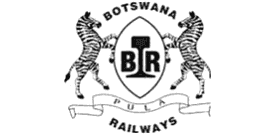 Botswana’s Infrastructure Ambitions: Rail and Road Upgrades Set to Transform Regional Connectivity
Botswana’s Infrastructure Ambitions: Rail and Road Upgrades Set to Transform Regional Connectivity
In a pivotal address to Parliament on 24 October 2025, Botswana’s Minister of Transport and Infrastructure, Noah Salakae, outlined the nation’s latest infrastructure sector chapter within the National Development Plan (NDP). The presentation painted a candid picture of both the challenges and the bold ambitions shaping Botswana’s future as a regional powerhouse for trade, logistics, and investment.
Recent years have seen a decline in employment within the infrastructure sector, with figures dropping from 4% in 2021 to 2.7% in 2023. This 1.3 percentage point decrease, particularly in the transport and logistics sub-sector, signals a need for urgent intervention. Project implementation hurdles have further delayed the delivery of essential services, underscoring the importance of renewed focus and reform.
The government’s vision is clear: to overcome these obstacles and deliver modern, integrated infrastructure that not only serves local communities but also positions Botswana as a premier hub for regional and international commerce. This strategy is rooted in the development of world-class transport systems that support resource security, foster sustainable economic diversification, and enhance connectivity to both regional and global markets.
One of the most pressing issues highlighted was the decline in rail freight volumes. Since 2015, Botswana has witnessed a steady drop in both imports and exports, which once peaked at 843,000 tonnes and 738,000 tonnes, respectively. The downturn is attributed to a combination of rail infrastructure limitations and mounting competition from road transport. The main railway line, stretching from Ramatlabama to the Varakaranga Border with Zimbabwe, has suffered from years of underinvestment, resulting in increased maintenance costs and operational inefficiencies.
To reverse these trends and unlock new economic opportunities, Botswana is embarking on a series of transformative rail projects under the National Development Plan 12 (NDP 12). Most of these initiatives are slated for implementation through Public Private Partnerships (PPPs), reflecting the government’s commitment to leveraging private sector expertise and investment for national development.
Among the flagship projects is the Mmamabula–Lephalale Rail Link, designed to connect Botswana’s rail network directly to South Africa at Lephalale. This corridor will facilitate the export of coal through the Richards Bay port, opening up new markets and revenue streams. Another critical initiative, the Mosetse–Kazungula–Livingstone Rail Link, aims to streamline the movement of goods between Botswana and Zambia, significantly reducing transit times and enhancing logistics efficiency along the vital North-South Corridor.
The Trans-Kalahari Rail (TKR) project stands out as a game-changer, promising to deliver substantial economic benefits not only to Botswana and Namibia but also to the broader Southern African Development Community (SADC) region. The government also plans to upgrade the Ramatlabama–Varakaranga Border line and rehabilitate the Zimbabwe rail line, enabling higher axle loads, faster turnaround times, and improved freight efficiency.
While rail remains a cornerstone of Botswana’s connectivity strategy, the country’s road network is equally critical. Botswana currently relies on a 32,500 km road system, of which only 10,725 km are tarred. This limited coverage has created bottlenecks that impact key sectors such as tourism, agriculture, and mining, restricting production and driving up transport costs. Addressing these gaps is essential for unlocking the full potential of Botswana’s diverse economy.
Recognising the need for a more enabling environment, the government is prioritising legal and regulatory reforms to enhance implementation efficiency, transparency, and long-term sustainability in the transport sector. A cornerstone of these reforms is the proposed separation of rail infrastructure management from rail operations. Under current legislation, Botswana Railways holds a monopoly as the sole rail operator. The new framework would see Botswana Railways retain ownership of infrastructure while opening up rail services to multiple operators. This shift is expected to drive efficiency through competition and attract much-needed investment in both infrastructure and rolling stock.
These reforms are not just about modernising Botswana’s transport sector—they are about positioning the country as a regional leader in logistics and trade facilitation. By embracing PPPs, fostering competition, and investing in both rail and road infrastructure, Botswana is laying the groundwork for a more resilient, diversified, and globally connected economy.
For Africa’s travel industry professionals, these developments signal a wave of new opportunities. Improved transport links will not only facilitate the movement of goods but also enhance the accessibility of Botswana’s renowned tourism destinations. As the country strengthens its role as a gateway to southern Africa, stakeholders across the continent stand to benefit from increased trade, investment, and visitor flows.
Looking ahead, Botswana’s infrastructure agenda is set to reshape the nation’s economic landscape. The focus on integrated, sustainable, and competitive transport systems aligns with broader continental trends, as African countries seek to harness infrastructure as a catalyst for growth and transformation. For those in the travel and hospitality sectors, staying attuned to these changes will be key to capitalising on the new era of connectivity and opportunity unfolding across the region.
